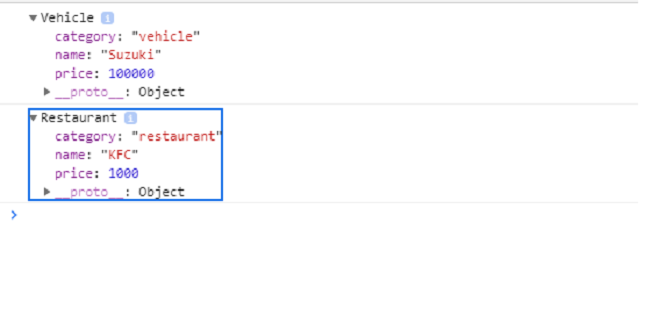JavaScript Function.prototype.call() Method
Last Updated :
24 Jan, 2022
The call() method allows function calls belonging to one object to be assigned and it is called for a different object. It provides a new value of this to the function. The call() method allows you to write a method once and allows it for inheritance in another object, without rewriting the method for the new object.
Syntax:
myFunc.call([thisArg[, arg1, arg2, ...argN]])
Parameters:
- thisArg: The values to use as this when calling myFunc function.
- arg1, arg2, …, argN: These are the arguments for the above mentioned function.
Note: In certain cases, thisArg may not be the actual value. If the method is in non-strict mode, primitive values will be converted to objects and null,undefined will be replaced with the global object.
Return value: It returns the specified this value and arguments as a result of calling of the function.
Example 1: The following example demonstrates the use of calling to chain constructors for an object.
html
<script>
function Product(name,
price) {
this.name = name;
this.price = price;
}
function Vehicle(name,
price) {
Product.call(this,
name, price);
this.category = 'vehicle';
}
function Restaurant(name,
price) {
Product.call(this,
name, price);
this.category = 'restaurant';
}
const car = new Vehicle('Suzuki',
100000);
const restau = new
Restaurant('KFC', 1000);
console.log(car);
console.log(restaurant);
</script>
|
Output:

Example 2: The following example demonstrates the use of call() method to invoke an anonymous function.
html
<script>
const Birds = [
{ species: 'Pigeon', name: 'King' },
{ species: 'Crow', name: 'Fail' }
];
let i=0;
while(i<Birds.length){
(function(i) {
this.print = function() {
console.log('#' + i + ' '
+ this.species
+ ': ' + this.name);
}
this.print();
}).call(Birds[i], i);
++i;
}
</script>
|
Output:
#0 Pigeon: King
#1 Crow: Fail
Example 3: The following example demonstrates the use of call method to invoke a function and specifying the context for ‘this’.
html
<script>
function greet() {
const reply = [this.animal,
'typically sleep between',
this.sleepDuration].join(' ');
console.log(reply);
}
const obj = {
animal: 'Rats',
sleepDuration: '2 and 5 hours'
};
greet.call(obj);
</script>
|
Output:
Rats typically sleep between 2 and 5 hours
Example 4: The following example demonstrates the use of call() method to invoke a function without specifying the first argument.
html
<script>
var str = 'Brad';
function display() {
console.log('string value is %s ',
this.str);
}
display.call();
</script>
|
Output:
string value is Brad
Note: In strict mode, the value of this will be undefined.
html
<script>
'use strict';
var str = 'Brad';
function display() {
console.log('str value is %s ',
this.str);
}
display.call();
</script>
|
Output:
Cannot read property 'str' of undefined
Like Article
Suggest improvement
Share your thoughts in the comments
Please Login to comment...